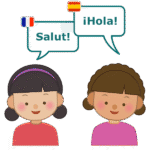In April, the Council of the Great City Schools published A Framework for Foundational Literacy Skills Instruction for English Learners to share best practices for teaching ELs of all grade levels. The framework synthesizes the latest research in the fields of early literacy, second language acquisition, and linguistics — so that you don’t have to! But it is 80 pages, so we aim to give you the highlights.
Main Idea
Currently most English Learners (ELs) receive instruction that starts heavy on code-based skills, such as phonics. But the latest research shows that ELs need to develop language skills together with grade-level content knowledge at the same time they build their code-based skills.
Why? Students from English-speaking homes arrive in class knowing how all the parts of the English language connect. ELs do not. They must first learn how a language works in authentic discourse (with real content) before they can break it down into abstract parts in code-based skill learning. Think about it: Does learning a phoneme like the /p/ sound in “pepper” have any meaning? Nope! It is abstract.
{% module_block module “widget_1682885221152” %}{% module_attribute “label” %}Vast FAQ Module{% end_module_attribute %}{% module_attribute “path” %}/Marketplace/HubSpotSiteSetup/Vast_Site_Setup/Custom_Modules/Vast FAQ Module{% end_module_attribute %}{% module_attribute “module_id” %}10269350{% end_module_attribute %}{% module_attribute “schema_version” %}2{% end_module_attribute %}{% module_attribute “tag” %}module{% end_module_attribute %}{% module_attribute “no_wrapper” %}false{% end_module_attribute %}{% module_attribute “faq_answer” %}
- print conventions
- letter sounds
- phonics
- segmenting & syllables
- rhyming words
- decoding
{% end_module_attribute %}{% module_attribute “faq_question” %}What are examples of code-based skills?{% end_module_attribute %}{% module_attribute “css” %}{}{% end_module_attribute %}{% module_attribute “child_css” %}{}{% end_module_attribute %}{% end_module_block %}
{% module_block module “widget_1682885383800” %}{% module_attribute “label” %}Vast FAQ Module{% end_module_attribute %}{% module_attribute “path” %}/Marketplace/HubSpotSiteSetup/Vast_Site_Setup/Custom_Modules/Vast FAQ Module{% end_module_attribute %}{% module_attribute “module_id” %}10269350{% end_module_attribute %}{% module_attribute “schema_version” %}2{% end_module_attribute %}{% module_attribute “tag” %}module{% end_module_attribute %}{% module_attribute “no_wrapper” %}false{% end_module_attribute %}{% module_attribute “faq_question” %}What are examples of language skills?{% end_module_attribute %}{% module_attribute “faq_answer” %}
- word recognition
- vocabulary
- morphology
- word order
- grammar rules
- storytelling
- discourse / listening speaking
- pronunciation
- comprehension
- meaning-making
{% end_module_attribute %}{% module_attribute “css” %}{}{% end_module_attribute %}{% module_attribute “child_css” %}{}{% end_module_attribute %}{% end_module_block %}
Summary of Best Practices
The framework’s goal is for a student to understand the contextual meaning of words, academic concepts, statements, and texts. Several practices can help you accomplish this goal:
Develop language-based and code-based skills together.
The new model is for ELs to develop literacy in Tier I instruction by listening, speaking, reading, and writing using grade-level content, together with learning code-based skills such as phonics and decoding.
- Model speaking in English and enable your students to practice listening and speaking, with a focus on distinguishing sounds within syllables and words.
- Strategically use read-alouds of academic texts to connect spoken language with written text, especially if your ELs cannot yet read grade-level texts independently.
- Support your ELs through interactive and shared reading activities that use their decoding skills to understand words, sentences, and text connected to grade-level content.
- Give explicit instruction on how spoken words are represented in written form.
- Have students form phrases and sentences to convey ideas about texts connected to grade-level content.
Anchor literacy instruction with grade-level content.
Support students in learning academic content by connecting literacy skills to content knowledge.
- Model use of academic language when speaking and writing while leading activities that build your ELs’ understanding of the grade-level content.
- Put vocabulary instruction into the context of relevant academic content. For example, if the student is learning about graphs, you might connect the words increase, decrease, increasing, and decreasing.
- Provide instructional activities for ELs to write or speak ideas and form sentences using words within the context of grade-level content.
- Give opportunities to practice decoding texts connected to the unit of study.
Prioritize comprehension and meaning-making.
Develop familiarity with sounds into words in meaningful contexts, then phrases and sentences from texts connected to grade-level content. The focus should be on having students convey meaning at the level of phrases and connected text.
- Create activities that enable ELs to connect their decoding skills to understanding of words in the context of grade-level text. Show how these words form meaningful phrases and sentences.
- Introduce new vocabulary and texts in topics related to a unit of study to facilitate meaning-making.
- Use checks for understanding while students read to assess whether students are making meaning and comprehending text.
- Model how to read with expression to convey the meaning of the text. Then have your ELs practice expressive reading, building their understanding of how intonation impacts the meaning.
Value language diversity and identity.
Build on the assets of ELs, including home language literacy, prior learning, dialects, and comparing languages.
- Learn which sounds your students know so you can focus on areas where their home language differs. Help them recognize these differences!
- Learn whether your ELs know how to read in their home language so that you can transfer these skills to English.
- Be supportive of non-standard English varieties as a bridge to literacy. Help students see standard English as a way to make meaning of academic texts and participate in academic discourse.
- Challenge ELs to notice differences between registers of English used in different settings like school vs. home vs. with friends.
- Be supportive of students initially forming their thoughts in a home language before putting it into English.
Tools to Implement Best Practices
Speak Agent’s Content+Language℠ programs provide tools and activities that make implementing many of the above best practices easy! If you’d like to learn more, schedule some time to speak with us at your convenience:
{{cta(‘73127d2c-4e8b-4cf7-a39e-74103d9fa4d4’)}}
Read Also:
Other Good Reads:
- ClassTech Tips Blog: How to Learn Math and Science with Language Support
- eSchool News: How a Major MD District Boosted Middle Math Achievement
- Digital Promise: Integrating Research-based Strategies into the Design of Educational Technology to Support All Learners





